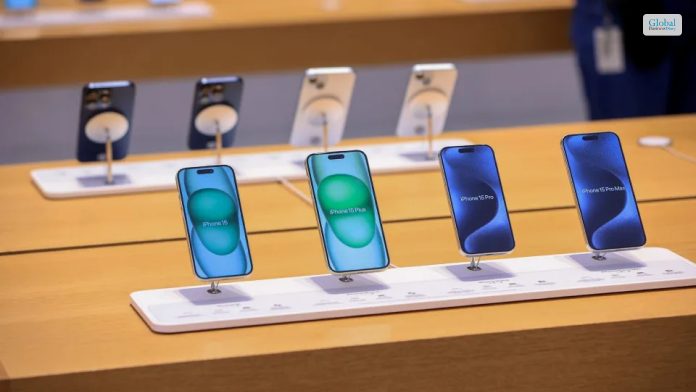Why Get An MBA Degree: Reasons And Benefits

A Master’s in Business Administration (MBA) is a graduate degree that will enable you to acquire theoretical and practical skills to help you become proficient in business management. One of the main reasons you should get an MBA degree is that you will improve your chances of being promoted to top managerial positions.
Professional MBA programs are designed for learners with bachelor’s degrees but who have less than 5 years of professional experience. An executive MBA program targets learners working at senior management levels within their organizations. One consideration you should make while contemplating getting an MBA degree is that some programs would require you to have a working experience of 2 to 5 years while others do not.
Can you get an MBA without an undergraduate degree? No. Pursuing an MBA degree will require you to be a holder of a bachelor’s degree or even a master’s degree in another field. In case you have an associate’s degree, you should first enroll in an undergraduate before proceeding to an MBA. In addition, some higher learning institutions offer dual-degree MBA programs, which are suitable for students who want to pursue different master’s degrees but also want to improve their business acumen. Therefore you can get an MBA without a business degree.
Is Getting An MBA Worth It: Let’s Explore
It is expected that before you decide to get an MBA, you need answers to different questions due to the efforts and commitment involved in completing the program. I can assure you that MBA is one of the best programs in terms of career growth, salary increment, and extensive networking.
Here are the main factors that make MBA worth it:
Gain Unique Skills Required In Modern Businesses
The modern business environment is increasingly dynamic which requires professionals to have up-to-date skills to match the trends. Pursuing MBA allows you to widen your skillset to become more adaptable to the prevailing job market demands. For instance, you will get essential skills that will help your organization to remain competitive and adaptable to consumer preferences and demands.
An Opportunity To Understand Different Industries
Getting an MBA allows you to have a better understanding of diverse industries in several ways. First, it allows you to interact and collaborate with professionals from diverse industries allowing you to gain a better perspective on different fields such as science, economics, and psychology. Secondly, the program will expose you to real-life case studies of companies in different industries which will help you understand how they function and the leadership roles and responsibilities. You may decide to pursue a new challenge in an industry you never thought you would work in.
Completing assignments at an advanced academic level is sometimes challenging due to time constraints or the complexity of the field. To overcome these challenges, a custom dissertation writing service can be a reliable option to help you meet your deadlines and deliver exceptionally high-quality projects that guarantee your academic success. CustomWritings is one of the leading reliable and trustable dissertation writing services that would help you complete any of your assignments including Ph.D. proposals, theses, and dissertations among other types of academic work. If you are looking for assistance do not hesitate to contact the company’s customer service team for more information.
Speed Up Your Career Path
An MBA will open up an opportunity for you to climb the organizational ladder within the company you are working in. Some individuals pursuing MBA are not interested in changing their careers, rather they want to climb up the corporate ladder. With an MBA, you will gain more access to senior leadership roles allowing you to gain practical skills and knowledge about more challenging tasks.
Build Strong Networks
MBA allows you to establish strong professional networks that open numerous opportunities for career growth and development. Once you enroll for an MBA, you are undoubtedly joining a team of future corporate leaders and well-connected alumni. On most occasions, MBA programs provide networking events that will allow you to expand your reach, guaranteeing success in jobs.
Read Also: Profitable Business Ideas To Start In UAE
Why Should I Get An MBA Degree: Here Are The Benefits
If you are still pondering to answer “why get an MBA degree?” here are the unique benefits you will enjoy:
- Explore new career paths: one of the key benefits of an MBA is that it will help you explore new career paths. While you may be contemplating getting an MBA while working for career growth, you might end up choosing a completely different path due to the introspection you acquire from pursuing an MBA.
- Gain better communication skills: One of the important skills in the modern market environment is communication. When you become a better communicator, you can avoid organizational conflicts which adversely impact the attainment of organizational goals. You will express your ideas better, making a significant contribution to organizational growth.
- Enhance collaboration: Organizations achieve most of their goals through collaborative teams. One of the most important aspects of an MBA is that it emulates real-life scenarios such as collaboration and problem-solving. Whether you get an MBA online or otherwise, you will collaborate with other students to complete specific projects, gaining essential skills that you will transition to the workplace.
- A better understanding of the global business environment: An MBA will help you gain a better perspective on the international business environment. For instance, you will interact with students from diverse regions, who have different work experiences and perspectives. It will help you to better understand the global market.
Tips To Get An MBA Degree: Here Is How You Can Acquire Your MBA Degree
One of the main concerns before pursuing an MBA is how long it will take to complete the program. Irrespective of the course format, students will study the same units in the first year, electives, and Thesis in the second. Here are several tips that will help you accomplish your study goals within a specific time frame whether you are getting your MBA online or on campus.
- Part-time MBA program: If you don’t have adequate time and resources to complete your MBA full-time, this is the best option for you. You may take up to 5 years to complete the course.
- Full-time MBA program: the program takes 2 years to complete. Classes are offered on campus, on evenings and weekends, or online.
- Accelerated MBA program: The program has fewer courses and students pursuing the program are expected to master the concepts quicker than their counterparts in full-time and part-time programs. The program, however, is designed to be full-time, therefore, more demanding. If you wish to complete your studies quickly, it is the best option for you.
Read Also:













